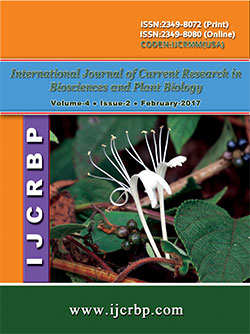 |
Online ISSN : 2349-8080 Issues : 12 per year Publisher : Excellent Publishers Email : editorinchiefijcrbp@gmail.com |
Fusarium head blight (FHB), caused by Fusarium graminearum, has become one of the most destructive diseases in the world’s wheat growing areas, especially in the humid and semi humid regions. F. graminearum results in yield and quality reduction and accumulation of mycotoxins. Nine winter wheat cultivars widely grown in Denmark or Iraq have been evaluated for FHB resistance during 2014/2015. The evaluation was made by means of artificial inoculations with F. graminearum under greenhouse conditions. Two inoculation methods were used Injection method, detect type II resistance by injecting fusarium conidia into individual florets and detect resistance to initial infection type I resistance by Spraying Fusarium conidia on the spikes. More precise data relating the effects of FHB on yield have been obtained using inoculated trials. Based on these data, there was no significant difference between syringe inoculation and spray inoculation (p<0.0001), whereas a significant differences between cultivars and method of inoculation on cultivars, Eiba99 and Rabiea which were assessed as resistant, and the cultivars, Skalmeje, Ritmo, Sham6, Aras, Mariboss, Eiba95 and Hereford as susceptible to FHB. Response to FHB was assessed by the percentage of visually infected spikelets and head weight relative to the non-inoculated (control). In the resistant cultivars, both the total grain yield and some of the yield elements (spike weight, grain /spike and 1000 kernel weight) were significantly less affected by FHB than in susceptible cultivars. Furthermore, the yield components (spike weight, grain number /spike, grain weight/spike, TKW) were significantly and negatively affected by artificial inoculation with FHB in all nine tested wheat cultivars. On the basis of experimental results it is concluded that artificial inoculation with F. graminearum could provide additional information about selection of both resistant and susceptible wheat cultivars.
